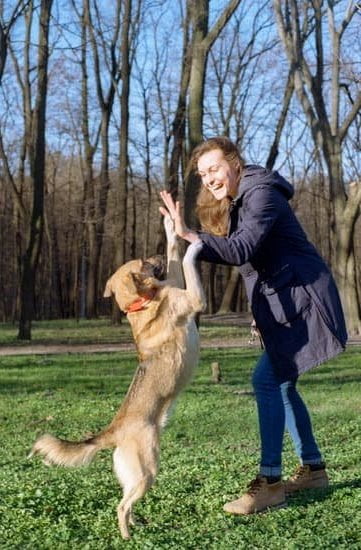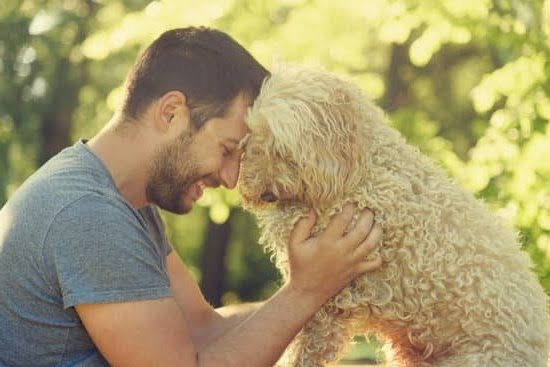Should you crate train a dog with resource guarding issues? Resource guarding in dogs can be a concerning behavior that can lead to aggression and other problems. Crate training is often recommended for dogs, but is it suitable for those with resource guarding issues?
Understanding the nature of resource guarding and the potential benefits and risks of crate training is essential for responsible dog owners. This article will explore the topic in detail, providing insights into how to address resource guarding in dogs through crate training and alternative methods.
Resource guarding is a natural behavior in dogs, rooted in their instincts to protect their valuable possessions such as food, toys, or space. It can manifest as growling, snapping, or even biting when someone approaches an item the dog considers valuable.
Crate training has been widely hailed as an effective tool for managing various behavioral issues in dogs, but its suitability for addressing resource guarding needs careful consideration. In this section, we will delve into the complexities of resource guarding behavior and its implications for crate training.
Identifying if your dog has resource guarding issues is crucial before deciding on a training approach. While some dogs may exhibit obvious signs of resource guarding, others may display more subtle behaviors that indicate possessiveness over certain items. By understanding the symptoms and triggers of resource guarding, dog owners can make more informed decisions about whether crate training is a viable solution for their pet’s behavioral challenges.
The Importance of Crate Training for Dogs
Crate training is an important aspect of a dog’s development and can be especially beneficial for dogs with resource guarding issues. When used correctly, a crate can provide a safe and secure space for the dog, while also helping to address their behavior problems. Here are some reasons why crate training is important for dogs:
- It provides a safe space: A crate can act as a den for the dog, giving them a comfortable and secure place to retreat to when they feel stressed or anxious. This is particularly important for dogs with resource guarding issues, as it can help them feel more secure and less inclined to protect their resources.
- It aids in potty training: Crate training can also be an effective tool for potty training, as dogs are naturally averse to soiling their living spaces. By using the crate as a way to encourage good bathroom habits, you can help your dog learn proper elimination behaviors.
- It prevents destructive behavior: Dogs left unsupervised can engage in destructive behaviors such as chewing furniture, shoes, or other household items. By confining your dog to a crate when you’re unable to supervise them, you can prevent these destructive behaviors from occurring.
Should you crate train a dog with resource guarding issues? Yes. Crate training can be an effective way to manage resource guarding behavior in dogs by providing them with a safe and secure space while also addressing their behavioral issues. With the right approach and guidance, crate training can help dogs with resource guarding learn better impulse control and reduce their territorial instincts.
Identifying if Your Dog Has Resource Guarding Issues
Resource guarding in dogs can often be misunderstood or overlooked by pet owners. It is essential to recognize the signs of resource guarding in order to address the behavior effectively. Some common signs of resource guarding include growling, snapping, or even biting when approached near food, toys, or other possessions. Dogs may also exhibit tense body language, such as stiffening or lowering their head protectively over the item in question.
In addition, some dogs may display behaviors such as gulping down food quickly, pacing around their possessions, or attempting to hide them. These actions are all indicative of a dog that is exhibiting resource guarding tendencies. If you notice any of these behaviors in your dog, it is important to take proactive steps to address and manage the issue.
Crate training a dog with resource guarding issues can be a useful tool in managing and modifying this behavior. By providing a safe and secure space for your dog, you can help them feel more comfortable and less inclined to guard their possessions.
It is important to introduce crate training gradually and positively reinforce your dog’s acceptance of the crate. This will help create a positive association with the crate and reduce the likelihood of resource guarding behavior while they are inside.
| Signs of Resource Guarding | Behavioral Indicators |
|---|---|
| Growling, snapping, biting | Tense body language |
| Gulping down food quickly | Pacing or hiding possessions |
Can Crate Training Help With Resource Guarding?
Resource guarding in dogs can be a challenging behavior to address, especially when it comes to training and management. One question that often arises is whether crate training can help with resource guarding issues in dogs. Crate training can indeed be a valuable tool in addressing resource guarding, as it provides a safe and controlled environment for the dog.
When a dog with resource guarding issues is properly crate trained, it allows them to have their own designated space where they feel secure and comfortable. This can be especially helpful during feeding times or when the dog has high value items that they tend to guard. By teaching the dog to associate the crate with positive experiences, such as receiving treats or meals, it can help reduce their anxiety and possessiveness over their resources.
It is important to note that while crate training can be beneficial for dogs with resource guarding issues, it should be done carefully and under the guidance of a professional trainer. Improper use of the crate or forcing the dog into the crate can exacerbate their guarding behavior and cause further stress. It’s crucial to approach crate training with sensitivity and patience, taking into consideration the individual needs and behavior of the dog.
How to Safely Crate Train a Dog With Resource Guarding Issues
Crate training can be a valuable tool for managing resource guarding issues in dogs, but it should be approached with caution and care. When done correctly, crate training can provide a safe and secure space for your dog while also helping to modify their behavior. Here are some important steps to follow when safely crate training a dog with resource guarding issues:
- Start by choosing the right crate: The crate should be large enough for your dog to stand up, turn around, and lie down comfortably. It should also be made of durable materials and have a secure latch.
- Introduce the crate slowly: For a dog with resource guarding issues, the crate may initially be seen as another item worth guarding. Begin by placing the crate in a neutral area of your home and allowing your dog to explore it at their own pace.
- Use positive reinforcement: When your dog willingly enters the crate, offer praise, treats, or their favorite toy to create positive associations with the space. Gradually increase the amount of time they spend in the crate while continuing to reinforce good behavior.
It’s important to note that not all dogs will respond well to crate training, especially if they have severe resource guarding tendencies. In these cases, alternative training methods may be more suitable.
Ultimately, every dog is unique, and what works for one may not work for another. If you’re struggling to address resource guarding behaviors in your dog, it’s best to seek guidance from a professional trainer or behaviorist who can tailor an effective training plan to meet your specific needs.
Alternative Training Methods for Dogs With Resource Guarding
Resource guarding in dogs can be a challenging behavior to address, and crate training is not always the best approach for every dog. In cases where a dog exhibits resource guarding issues, alternative training methods may be more effective in addressing this behavior. One alternative method is desensitization and counter-conditioning, which involves changing the dog’s emotional response to the trigger that causes resource guarding.
Desensitization and counter-conditioning involve gradually exposing the dog to the trigger at a low intensity while providing positive reinforcement, such as treats or praise, to create a new, positive association with the trigger. This process should be done under the guidance of a professional trainer who has experience working with dogs exhibiting resource guarding behavior.
Another alternative training method is implementing a “nothing in life is free” program, where the dog must earn all resources such as food, toys, and attention through obedience commands. This teaches the dog impulse control and helps establish you as the leader, which can reduce resource guarding behavior over time.
It’s important to remember that every dog is different, and what works for one may not work for another. Seeking guidance from a professional trainer who understands resource guarding behavior is crucial in determining the most effective training method for your dog.
| Training Method | Description |
|---|---|
| Desensitization and Counter-Conditioning | A gradual exposure to triggers with positive reinforcement |
| “Nothing in Life is Free” Program | The dog earns all resources through obedience commands |
The Role of Professional Trainers in Addressing Resource Guarding
Resource guarding in dogs can be a challenging behavior to address, and professional trainers play a crucial role in helping dog owners manage and modify this behavior. Trainers have the expertise and experience to provide guidance and support in addressing resource guarding issues, ensuring the safety of both the dog and the people around them.
Expert Assessment and Guidance
Professional trainers are equipped with the knowledge to assess the severity of resource guarding behavior in dogs. They can help dog owners understand the underlying reasons for this behavior and create a customized training plan to address it effectively. Their expertise allows them to identify triggers for resource guarding and develop strategies to modify this behavior without causing distress to the dog.
Implementing Positive Reinforcement Techniques
Trainers specializing in behavior modification use positive reinforcement techniques to address resource guarding in dogs. They focus on rewarding desirable behaviors, such as sharing or relinquishing items, while also teaching alternative behaviors that replace resource guarding. This approach creates a positive association with giving up resources, ultimately reducing the likelihood of guarding behaviors.
Ensuring Safety During Training
Professional trainers can provide guidance on how to safely crate train a dog with resource guarding issues. They may recommend specific protocols or modifications to the training process to minimize stress or potential conflicts during crate training sessions. Their expertise helps dog owners navigate this process while prioritizing safety for both the dog and the household members.
By enlisting the help of professional trainers, dog owners can gain valuable insights and support in addressing resource guarding behaviors effectively. With their guidance, individuals can work towards creating a safe and harmonious environment for their dogs, ultimately improving the well-being of their furry companions.
Monitoring and Managing Resource Guarding Behavior in Dogs
Resource guarding behavior in dogs can be a serious issue that requires careful monitoring and effective management. It is important for dog owners to understand the signs of resource guarding and take proactive steps to address and manage this behavior in their pets.
Signs of Resource Guarding
It is essential for dog owners to be able to recognize the signs of resource guarding in their pets. These signs may include growling or snapping when approached while eating, aggressive behavior when someone tries to take away a toy or food, stiff body language, and reluctance to share items with humans or other pets. By closely monitoring their dog’s behavior, owners can identify any potential issues with resource guarding early on.
Managing Resource Guarding
When it comes to managing resource guarding behavior in dogs, crate training can be a helpful tool. By creating a safe and secure space for the dog, crate training can provide a sense of security and help reduce anxiety related to resource guarding. However, it is important to approach crate training with caution and seek professional guidance if necessary.
Seeking Professional Help
In some cases, managing resource guarding behavior may require the expertise of professional trainers or behaviorists. These individuals have the knowledge and experience to assess the situation accurately and develop a customized training plan for the dog. Consulting with professionals can provide invaluable support for both the pet and its owner in addressing resource guarding issues effectively.
Conclusion
In conclusion, the decision to crate train a dog with resource guarding issues should be carefully considered based on the individual needs and behavior of the dog. While crate training can be an effective tool for managing resource guarding in some cases, it is not a one-size-fits-all solution. It is important for dog owners to first understand the underlying causes of their dog’s resource guarding behavior and seek guidance from a professional trainer or behaviorist.
For some dogs, crate training may provide a safe and secure environment where they can learn to feel more comfortable and less anxious about sharing resources. However, for other dogs, being confined to a crate may exacerbate their resource guarding tendencies and create additional stress or aggression.
Ultimately, the best decision for addressing resource guarding in dogs may involve a combination of training methods, including positive reinforcement, desensitization techniques, and behavior modification exercises. Professional trainers can offer tailored guidance and support to help dog owners address their pet’s resource guarding issues in a safe and effective manner.
It is important to prioritize the well-being of the dog when considering training methods for resource guarding. Whether choosing to crate train or explore alternative approaches, patience, consistency, and positive reinforcement are key elements in helping dogs overcome resource guarding behaviors and develop healthier relationships with their owners.
Frequently Asked Questions
Does a Crate Help With Resource Guarding?
A crate can be a helpful tool in managing resource guarding behavior in dogs. By providing a safe space for the dog to enjoy their resources without feeling threatened, it can help reduce their guarding tendencies.
How Do I Break My Dog From Resource Guarding?
Breaking a dog from resource guarding involves using positive reinforcement training techniques to modify the behavior. This may include desensitization exercises, teaching the “drop it” or “leave it” command, and gradually exposing the dog to controlled situations where they can learn to share their resources.
Does Crate Training Help With Aggression?
Crate training can be beneficial in managing aggression in dogs by providing them with a secure and comfortable space they can retreat to when feeling anxious or overwhelmed. It also helps prevent them from engaging in potentially aggressive behaviors when unsupervised, thereby promoting safety for both the dog and others.

Welcome to the blog! I am a professional dog trainer and have been working with dogs for many years. In this blog, I will be discussing various topics related to dog training, including tips, tricks, and advice. I hope you find this information helpful and informative. Thanks for reading!





